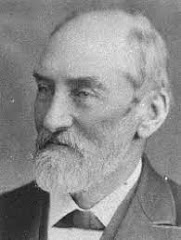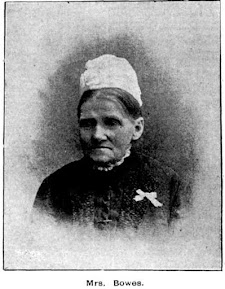A tune for the generations
Over the last few months, we have heard our national anthem played on many sporting occasions. When it is played, we all join in singing it, generally with gusto (well for at least the first verse and chorus that is) but who came up with this rousing tune in the first place?
Today's blog shines a light on the composer.
PETER DODDS MCCORMICK
Peter was born on 28 January 1833 in Port Glasgow, Scotland to Peter McCormick and his wife Janet (nee Dodds).
Peter arrived in Sydney in February 1855 aged 20 and worked as a joiner, becoming involved in amateur musical societies. He trained as a teacher at Fort Street school in 1863 before being appointed teacher in charge at St Mary's National School. In July that year he married Emily Boucher who became the sewing teacher at her husband's schools. They taught at schools closer to Sydney in 1865 however she died in March 1866. In December that year Peter married Elizabeth Dening and in 1867 he was appointed to the Presbyterian denominational school at Woolloomooloo and then to Dowling Street Public School in 1878 where he remained until he resigned in 1885.
Peter Dodds McCormick - Wikipedia
Peter was very Scottish in his ways as well as patriotic. He was a founder of the Caledonian Society and after its merger, of the Highland Society of NSW. His greatest interest was music and organised many church choirs of varying sizes, such as 15,000 children at the laying of the foundation stone of Queen Victoria's statue.
McCormick published about 30 patriotic and Scottish songs; his most famous one being "Advance Australia Fair" which was first performed by Andrew Fairfax, the nephew of John Fairfax the proprietor of the Sydney Morning Herald, at the St Andrews Day concert of the Highland Society on the 30th of
November 1878. The newspaper described the music as "bold and stirring" and it was "likely to become a popular favorite". He later had the music and four verses published by WH Paling & Co. Ltd under the pseudonym of "Amicus". It was sung by a choir of 10,000 voice at the inauguration of the Commonwealth and played by massed bands at the naming of the Federal capital celebrations in Canberra.
Advance Australia Fair - RAHS with thanks
in 1913 Peter described how he came to write the song -
"Attending a concert at the which national anthems were sung he "felt aggravated that there was not one note for Australia. On the way home in a bus, I concocter the first verse of my song, and when I got home, I set it to music...It seemed to me to be like an inspiration, & I wrote the words & music with the greatest ease".
In September 1915 he formally registered the copyright.
Peter Dodds McCormick died at his home in Birrell Street Waverley on 30 October 1916 and was buried in Rookwood cemetery in the Old Presbyterian section.
Peter Dodds McCormick headstone - photo author's own
The tenor Peter Dawson made a famous recording of the song in 1935 which did much to enhance its appeal. Until 1952, a shortened version was used as the news theme on ABC radio.
The copyright on Advance Australia Fair ended in 1966, fifty years after McCormick's death.
The policy for the Australian Labour Party for the 1972 elections included finding an alternative to God Save the Queen as our national anthem. Upon taking office it was announced that a competition would be held to find a new Australian Anthem.
Many submissions were received but all were found to be unsuitable. The judges recommended that three existing Australian songs be selected for an opinion poll, Advance Australia Fair, Waltzing Matilda and Song of Australia.
Waltzing Matilda by AB Paterson - National Library
Song of Australia - Wikipedia
As a result of the polls, it was announced that Advance Australia Fair was to be Australia's anthem but with God Save the Queen to be played when British royalty was present. Its status as official anthem was not granted by the Governor General until 1984, just in time for the song to be used at the 1984 Los Angeles Olympics.
In 1988 as part of the Bicentennial celebrations, a permanent marker was placed on McCormick's grave as an historical site.
Australian Bicentennial Project marker at McCormick's grave - Historic site (photo author's own)
The song has been tweaked in the past few years to be more inclusive and there is talk of maybe a new anthem in due course. We shall see.
Today I have utilised reference material from ancestry.com, Australian Dictionary of Biography, Wikipedia and The Dictionary of Sydney.
If you have any comments to make regarding this blog, please do so in the comments here or at the group Facebook page which can be found under a search of
rookwoodcemeterydiscoveries
or simply send me a personal email at
lorainepunch@gmail.com
Unfortunately, I will not be posting another blog in this format until mid-October as I undertake a few weeks in the Northern Hemisphere, seeking out notable people in cemeteries in the UK and Paris France as well as areas that have significance to those who call Rookwood "home".
I will send some snippets during the time to let you know I'm still alive but all the research I'll be undertaking, I hope, will certainly add to this blog upon my return.
So, until then....









Another very interesting blog…thank you…😇
ReplyDeleteYou're welcome
Delete